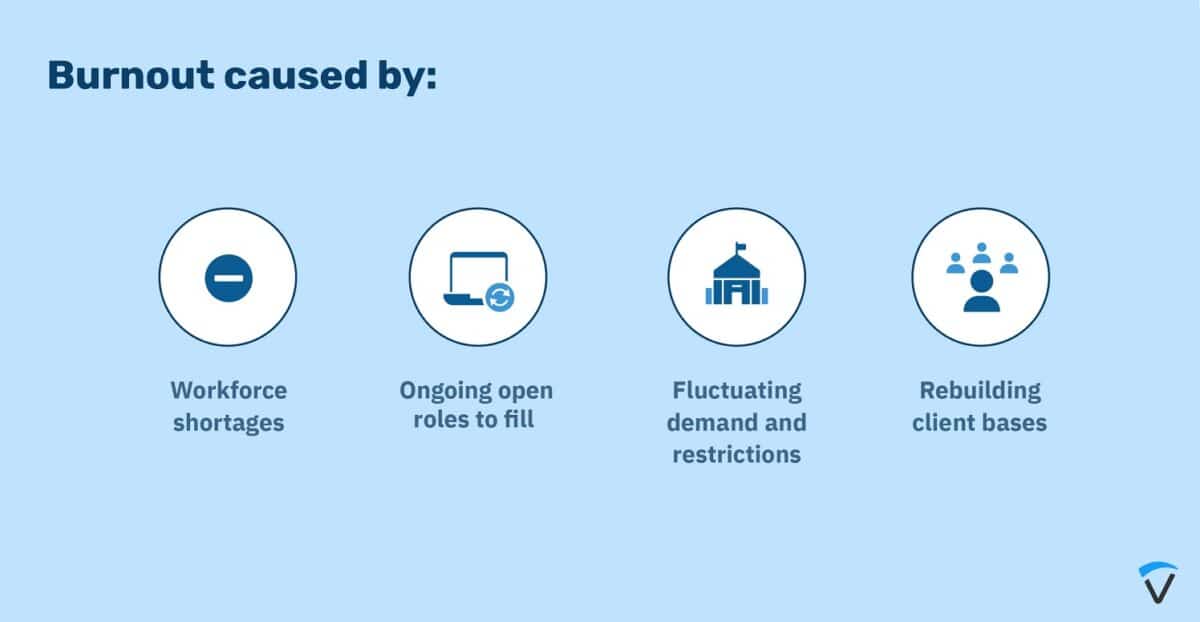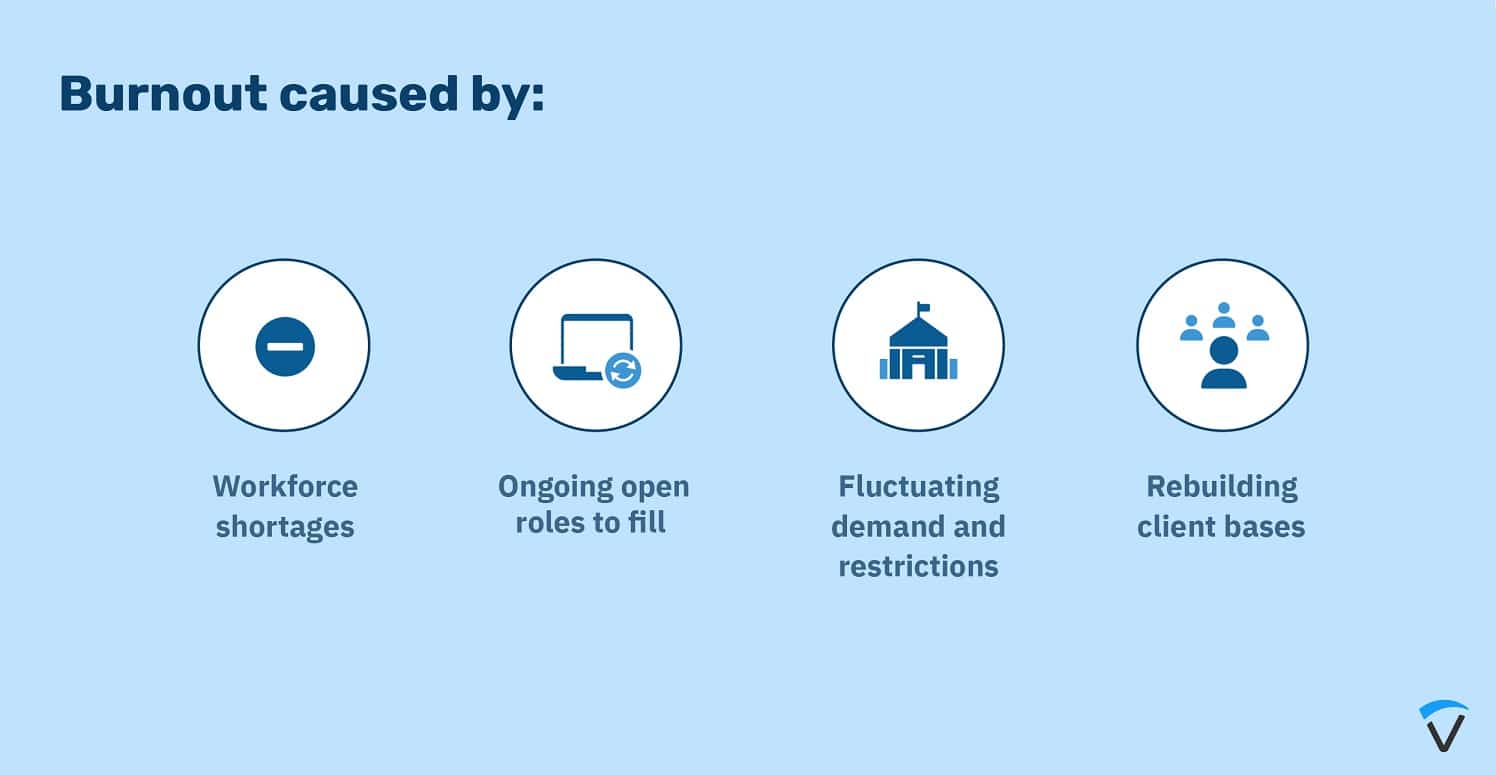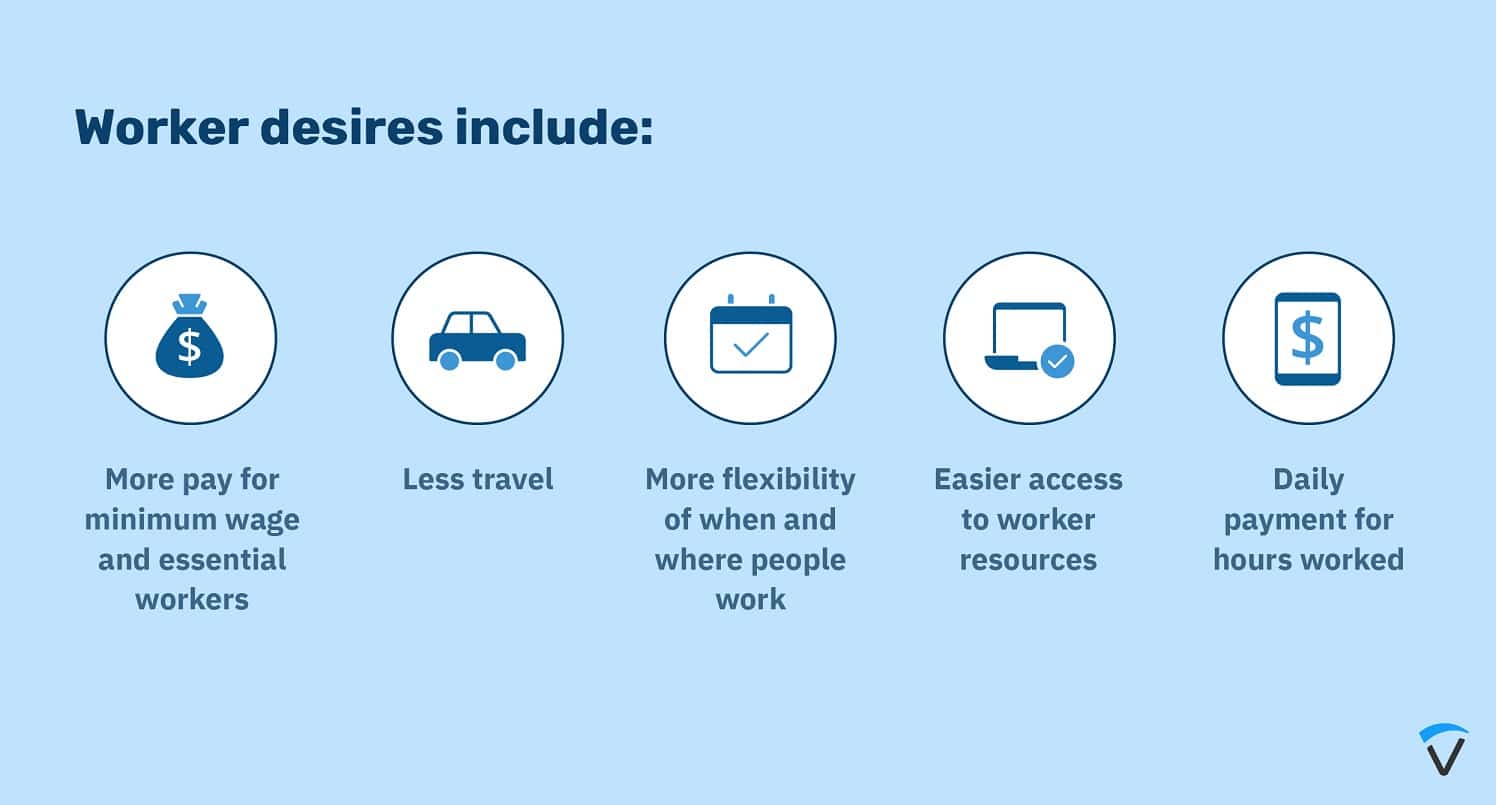Last year forced a lot of change within a lot of industries. Staffing was among those most affected. Now, as staffing firms, the workers they place and the businesses they serve move forward into 2021, there are a few key things that are going to be different.
TimeSaved interviewed a panel of staffing experts on the strategies that helped them brace for the downtown and come out even, or better, by the end of the year. Based on their advice, we produced an e-book on trends staffing firms should be mindful of in 2021. Here are some of those trends.
An increased focus on staffing in recession-proof industries. One of the key things that helped many agencies keep their heads above water last year was learning from the 2008 recession. At that time, many agencies made a point of diversifying their book of clients and specifically targeting recession-proof industries like healthcare and manufacturing.
This means that moving forward, a smart business strategy for staffing agencies is having enough clients that work in those specific industries and focusing on fostering relationships with recession-proof businesses.
But what could this change mean for other industries, like hospitality and event staffing, that are either notoriously prone to recession fluctuation, or were hit particularly hard by Covid-19? It is possible that we could see gig economy platforms, which have already grown in prevalence in these spaces, start to take up even more market share there.
More technology implementations, particularly of “staffing platforms.” Staffing is, generally speaking, a low-tech industry. Some have decades-old processes, legacy systems, and a resistance to change that has left them behind the times.
But this year has shown how instrumental technology is in pivoting your businesses as demands fluctuate. And it’s also made people more open to change, because traditional processes have already been upended by things outside of anyone’s control. In SIA’s Workforce Solutions Ecosystem Report it was noted:
“We expect many more staffing firms will be tempted to take advantage of the lower-cost and efficient business model offered by staffing platforms and follow the examples of The Adecco Group with their platform Adia and TrueBlue with their platform, Jobstack. Staffing firms have several options in how to go about this, but one thing is clear, Covid-19 is serving as an accelerant for staffing firms to address their digital strategies.”
2021 will be a big year for technology implementations in the industry, and this could be a double-edged sword if not done right. If agencies race to implement technology without due process it could create potentially frustrating hurdles for workers and businesses during an already frustrating time. It’s important that agencies be thoughtful through implementation: have the right team in place, build the right integrations, and budget for change management.
PREMIUM CONTENT: SIA 2021 Staffing Trends Report
Automation focused on alleviating burnout. Burnout is a big concern in the staffing industry right now, particularly healthcare staffing. And this applies to workers, businesses and the agencies themselves. In many industries — such as healthcare and education — Covid-19 was the catalyst for early retirement and a resulting lack of qualified workforce.
Drastic fluctuation in workload has certainly left its toll on recruiters, so moving forward there needs to be a focus on how automation can help alleviate that. What elements of your recruiters’ day don’t actually need to be done by a human? What things can be offloaded to automation so their recovery can be accelerated? These are going to be important questions to answer in 2021.
More control and better engagement for workers. If anyone had any doubt before that we were squarely in a candidate-driven market, that doubt should be erased by now. Covid has accelerated a change in worker desires that we had already observed taking hold last year. These include less travel, more access to resources, daily payment and more flexibility in hours worked.
While there were certain measures that only affected temporary change, such as government subsidies, there will be longer lasting legacies as well, like the normalization of remote work, that will allow candidates to work on their own terms.
And a focus on candidate engagement will be key. Also noted in SIA’s Workforce Solutions Ecosystem report: “Organizations often fall short in keeping job candidates happy, productive, and engaged through the hiring process. Well-designed engagement campaigns can make organizations more efficient and productive, freeing up time for recruiters to focus on higher value-added activities.”
For more insights from staffing experts on these strategies, you can download the full guide.


